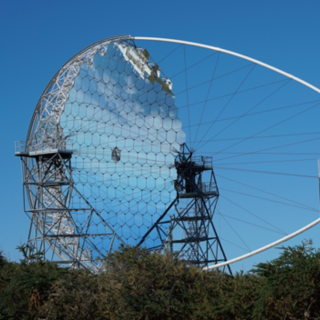Bibcode
Abe, H.; Abe, K.; Abe, S.; Aguasca-Cabot, A.; Agudo, I.; Alvarez Crespo, N.; Antonelli, L. A.; Aramo, C.; Arbet-Engels, A.; Arcaro, C.; Artero, M.; Asano, K.; Aubert, P.; Baktash, A.; Bamba, A.; Baquero Larriva, A.; Baroncelli, L.; Barres de Almeida, U.; Barrio, J. A.; Batkovic, I.; Baxter, J.; Becerra González, J.; Bernardini, E.; Bernardos, M. I.; Bernete Medrano, J.; Berti, A.; Bhattacharjee, P.; Biederbeck, N.; Bigongiari, C.; Bissaldi, E.; Blanch, O.; Bonnoli, G.; Bordas, P.; Borghese, A.; Bulgarelli, A.; Burelli, I.; Buscemi, M.; Cardillo, M.; Caroff, S.; Carosi, A.; Cassol, F.; Cauz, D.; Ceribella, G.; Chai, Y.; Cheng, K.; Chiavassa, A.; Chikawa, M.; Chytka, L.; Cifuentes, A.; Contreras, J. L.; Cortina, J.; Costantini, H.; D'Amico, G.; Dalchenko, M.; De Angelis, A.; de Bony de Lavergne, M.; De Lotto, B.; de Menezes, R.; Deleglise, G.; Delgado, C.; Delgado Mengual, J.; della Volpe, D.; Dellaiera, M.; Depaoli, D.; Di Piano, A.; Di Pierro, F.; Di Tria, R.; Di Venere, L.; Díaz, C.; Dominik, R. M.; Dominis Prester, D.; Donini, A.; Dorner, D.; Doro, M.; Elsässer, D.; Emery, G.; Escudero, J.; Fallah Ramazani, V.; Ferrara, G.; Ferrarotto, F.; Fiasson, A.; Freixas Coromina, L.; Fröse, S.; Fukami, S.; Fukazawa, Y.; Garcia, E.; Garcia López, R.; Gasbarra, C.; Gasparrini, D.; Geyer, F.; Paiva, J. Giesbrecht; Giglietto, N.; Giordano, F.; Giro, E.; Gliwny, P.; Godinovic, N.; Grau, R.; Green, D.; Green, J.; Gunji, S. et al.
Referencia bibliográfica
The Astrophysical Journal
Fecha de publicación:
10
2023
Revista
Número de citas
22
Número de citas referidas
15
Descripción
The Cherenkov Telescope Array (CTA) is a next-generation ground-based observatory for gamma-ray astronomy at very high energies. The Large-Sized Telescope prototype (LST-1) is located at the CTA-North site, on the Canary Island of La Palma. LSTs are designed to provide optimal performance in the lowest part of the energy range covered by CTA, down to ≃20 GeV. LST-1 started performing astronomical observations in 2019 November, during its commissioning phase, and it has been taking data ever since. We present the first LST-1 observations of the Crab Nebula, the standard candle of very-high-energy gamma-ray astronomy, and use them, together with simulations, to assess the performance of the telescope. LST-1 has reached the expected performance during its commissioning period-only a minor adjustment of the preexisting simulations was needed to match the telescope's behavior. The energy threshold at trigger level is around 20 GeV, rising to ≃30 GeV after data analysis. Performance parameters depend strongly on energy, and on the strength of the gamma-ray selection cuts in the analysis: angular resolution ranges from 0.°12-0.°40, and energy resolution from 15%-50%. Flux sensitivity is around 1.1% of the Crab Nebula flux above 250 GeV for a 50 hr observation (12% for 30 minutes). The spectral energy distribution (in the 0.03-30 TeV range) and the light curve obtained for the Crab Nebula agree with previous measurements, considering statistical and systematic uncertainties. A clear periodic signal is also detected from the pulsar at the center of the Nebula.
Proyectos relacionados

Astrofísica de Partículas
El Grupo de Astrofísica de Partículas del IAC participa activamente en tres grandes colaboraciones internacionales de astrofísica de muy altas energías: AMS-02 (Alpha Magnetic Spectrometer), los telescopios de radiación Cherenkov MAGIC I y II y el Cherenkov Telescope Array Observatory ( CTAO). Además, participamos en el ASTRI mini-array, el
Mónica Luisa
Vázquez Acosta